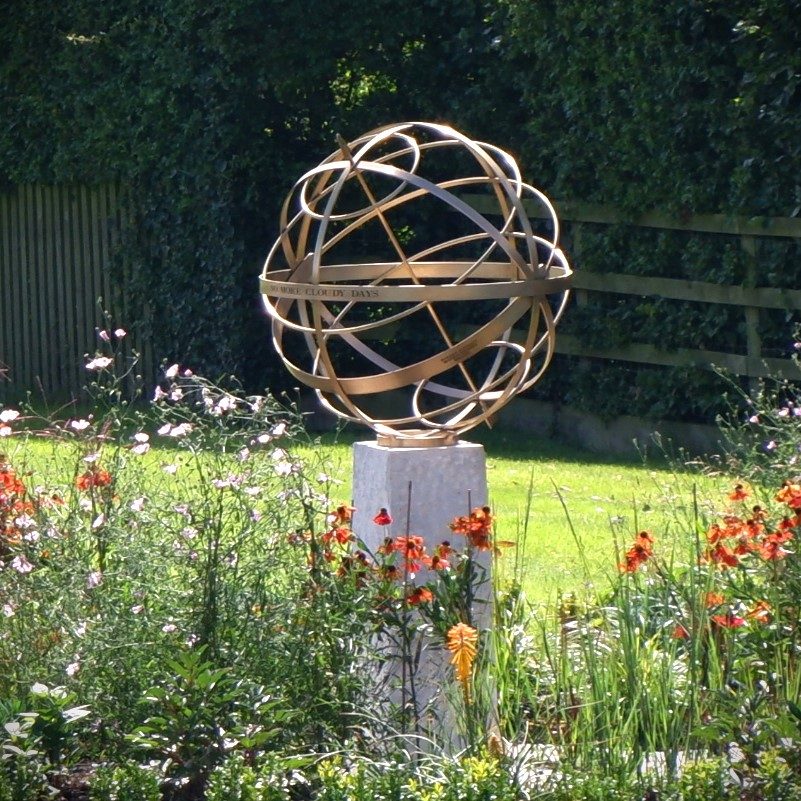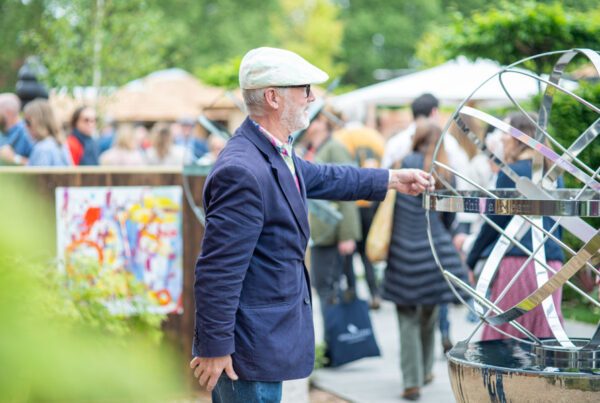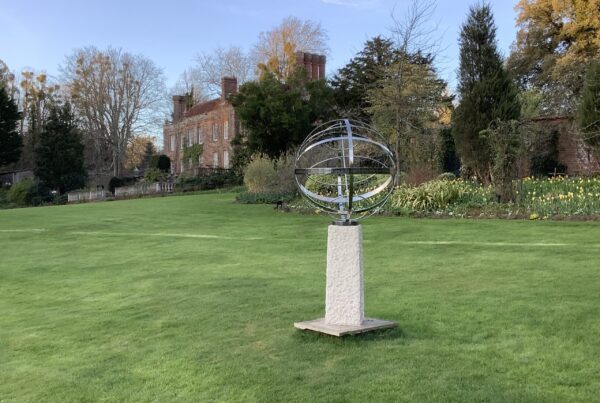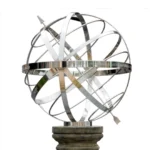A garden sculpture can elevate an outdoor space, adding character, depth, and focal points to the gardens design. It might serve as a dramatic centerpiece, a destination at the end of a path, or a delightful surprise among the foliage. Sculptures can range in style from traditional to contemporary, light to dark, and subtle to striking. Ultimately, the goal is to find a piece that enhances your garden, aligns with your taste, and brings enjoyment to those who experience it. Here, Capel Tenison offers some useful pointers for choosing and placing a garden sculpture.
1 Style
There are no hard and fast rules, however you might want to consider the style of the garden and the house. Traditional sculptures suit classical gardens, while abstract pieces complement modern designs. However, contrasts can be visually compelling, the shock of a modern piece in a traditional garden can stop the viewer in their tracks. The colour of the sculpture might also be a consideration at this point, do you want a piece that blends in or stands out?
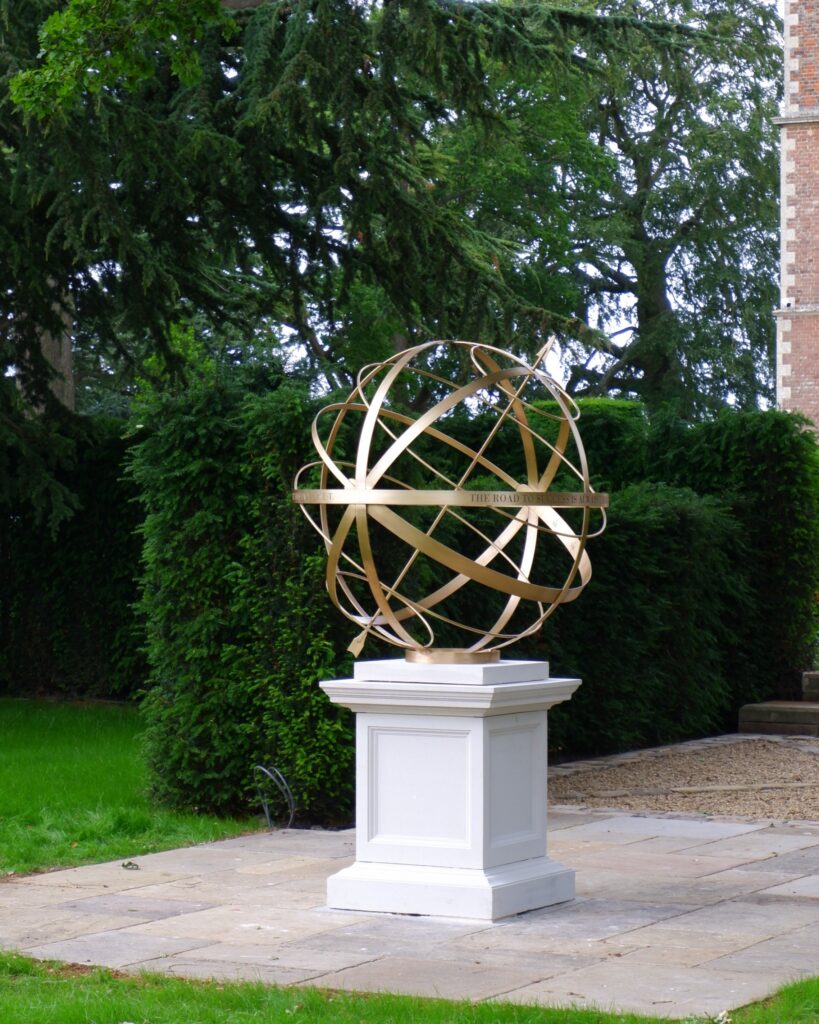
An Armillary Sundial brings grandeur and elegance to the garden
2 Materials
Material choices also influence the sculpture’s integration with its surroundings. In an outdoor setting it is important to consider how the material will stand up to the weather. Metals and stone are particularly durable outdoors. Bronze has a historical appeal and weathers to verdigris, a bluey green patina, polished stainless steel feels modern and reflects the colours of it’s surroundings, while brass weathers to dark chocolate brown, harmonizing with earthy colors and forming a strong contrast with the sky.

Brass, Verdigris Bronze, Mirror polished Stainless Steel
3 Positioning
The placement of a garden sculpture is crucial to its impact. One popular option is to use it as a focal point. In formal settings, a sculpture might be symmetrically positioned on a plinth at the convergence of garden paths, commanding attention. When placing a focal sculpture, consider how it appears from all angles and how its background will change when viewed from different directions.
Another approach is to use the sculpture as a destination, located at the end of a path or across a lawn. This adds depth to the garden, encouraging the viewer to walk over and explore the garden. It is important that a sculpture provides interest on closer inspection too, this could be through texture, fine detail such as engraved lettering.
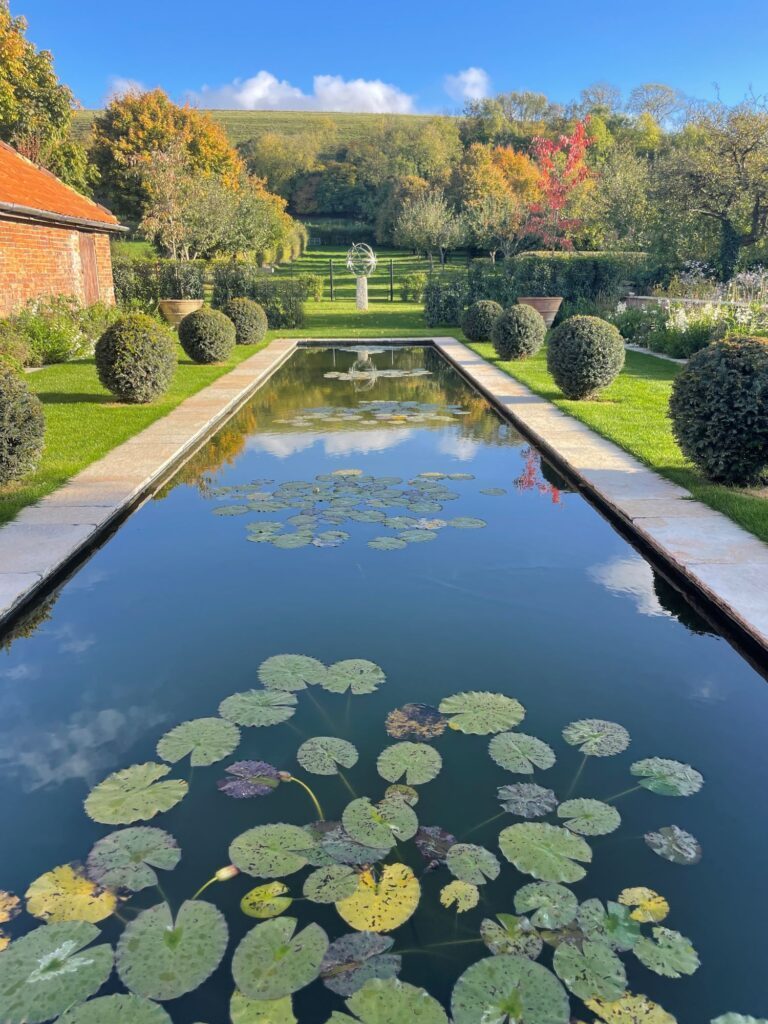
Bronze Armillary at the end of a rill
Alternatively, a more casual approach can involve placing the sculpture with or without a plinth in a seemingly random spot, consider how it will stand out against its background during the changing seasons. Does the topiary mirror the shape of the piece or provide a perfect foil. Placing a man-made object amidst natural elements can add texture and contrast.
Lighting should be considered before installation. Organising good lighting for the sculpture allows for 24 hours of pleasure from an artwork rather than just daylight hours.
4 Scale
Scale is also essential when selecting a garden sculpture. While larger pieces suit expansive gardens, they can also work beautifully in smaller spaces, creating a bold statement can actually making a small space feel larger. When positioning sculptures within plants, the size should align with the desired effect, consider how tall the plants or hedge will grow as the garden matures.
5 Price Point and Where to look
It is important to establish your price point, while garden centers, craft shops and Amazon may offer budget options, if you are looking for a high-end, original piece of garden sculpture, there are several excellent places to explore. Here are some of the top venues in the UK and where you can seek inspiration and find unique work:
Specialized Sculpture Gardens and Galleries
- Yorkshire Sculpture Park, West Yorkshire: Although not all sculptures are for sale, Yorkshire Sculpture Park works with top artists and can connect you with commissions or sales. They exhibit pieces by renowned artists such as Henry Moore and Barbara Hepworth, giving a taste of high-end garden art.
- On Form: Which speicalises in stone sculpture.
Renowned British Sculptors and Studios
- Capel Tenison: Border Sundials creates traditional, bespoke sundials in a variety of materials, these elegant timepieces are all unique, handcrafted and have the added interest when viewed up close of a personal engraving.
- James Parker: Specilaizes inglass, bronze and most recently mirror polished stainless steel, his designs inspired by the natural world.
- William Pye: Specializing in water sculptures, William Pye’s studio creates dramatic, water-themed works perfect for gardens. His pieces are technically advanced and known for their fluidity and craftsmanship.
- Hamish Mackie: Known for his expressive wildlife sculptures. His bronzes capture the essence of animals and are crafted to withstand outdoor elements.
Garden Fairs
- Chelsea Flower Show: The RHS Chelsea Flower Show often features garden sculptures by top sculptors. Many exhibitors showcase unique pieces tailored for outdoor settings.

